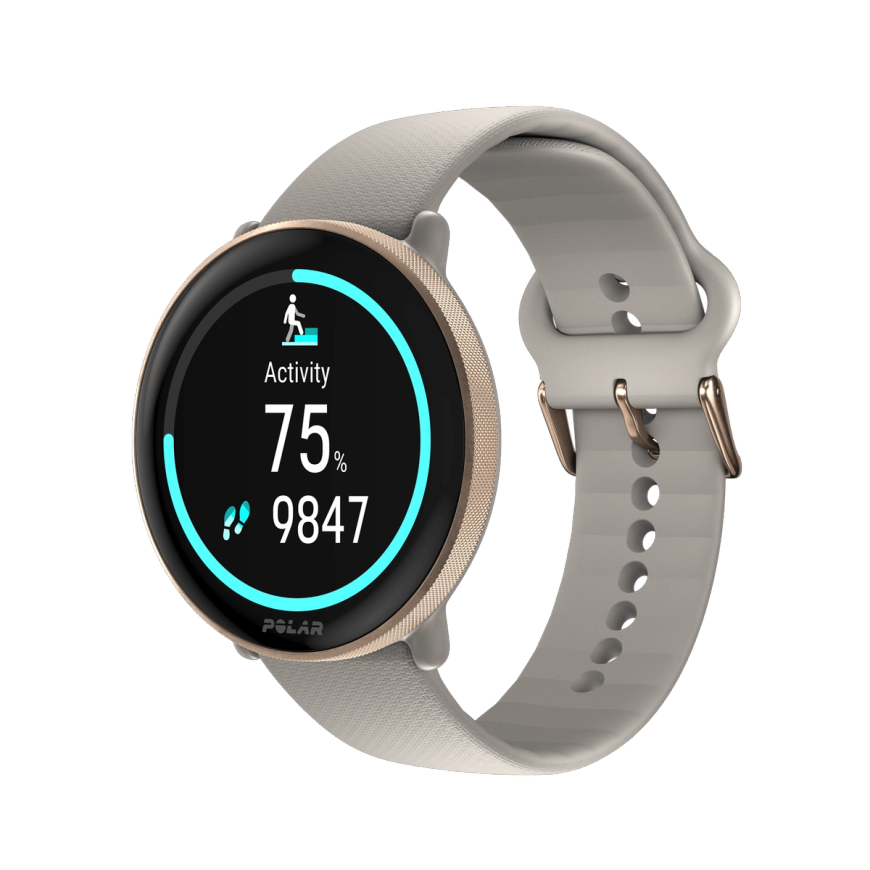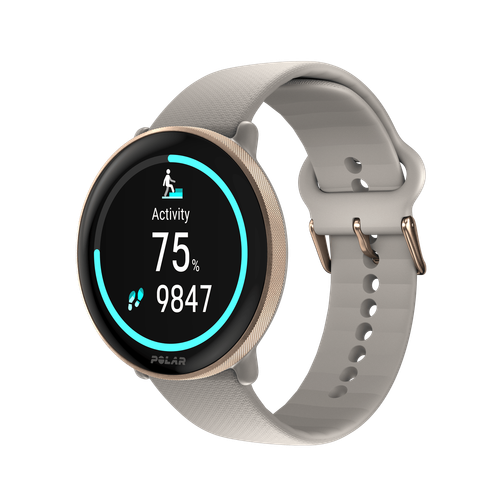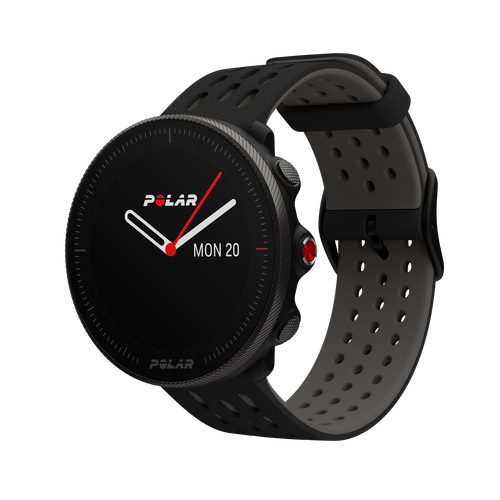Pregnancy is a journey of immense physical transformation. It's an incredible time of discovery, seeing what your body is capable of, but it also places significant demands on your body. As you slowly adapt to accommodate a growing life, one organ in particular undergoes remarkable changes: your heart.
In recent years, technological advancements have enabled pregnant women to track their health metrics with unprecedented precision. In 2022, two separate studies were released (by the University of Turku, Finland, and West Virginia University School of Medicine, USA), which harnessed the power of wearable technology to monitor heart rate and heart rate variability (HRV) throughout pregnancy.
Unlike previous research that relied on intermittent lab tests, these studies offered a continuous, real-time glimpse into the cardiac health of expectant mothers. By analyzing the intricate patterns of heart rate fluctuations and resting heart rate, researchers gained valuable insights into the physiological adaptations associated with pregnancy.
In the following sections, we'll delve into the key findings of these studies, exploring how your HRV and resting heart rate (RHR) will change throughout your pregnancy to help you understand when and why this will occur. Additionally, we'll look at the current exercise guidelines and discuss the potential benefits of physical activity during this transformative period.
How does pregnancy impact your HRV and resting heart rate?
Before we dive into the specifics of pregnancy's impact, let's quickly define our key terms:
- HRV (Heart Rate Variability): This measures the irregularity of your heartbeat rhythm over time. It's considered a low-cost, non-invasive measure of the overall competence of your autonomic nervous system.
- RHR (Resting Heart Rate): This measures the number of times your heart beats per minute at rest. It's widely regarded as a measure of cardiovascular fitness.
Generally, higher HRV and lower RHR are associated with better fitness levels. When evaluated together, these metrics provide valuable insights into your overall fitness and recovery capacity.
Trimesters One and Two
One of the most intriguing findings from the WVU School of Medicine study, which involved 18 pregnant women, was the immediate decrease in HRV and increase in RHR around conception.
The University of Turku study, which monitored a larger group of 58 women from weeks 12-15, also observed significant HRV decreases and heart rate increases.
So, it is safe to assume that if you were tracking your heart rate metrics before your pregnancy started and noticed consistently low HRV readings in your first and second trimesters compared to usual, then you can be assured that studies have shown this is very normal.
Similarly, if your heart rate, including your RHR, increases, know that this is also typical. It is common for heart rates to be 20-25% above baseline during these stages of pregnancy.

Trimester Three
As pregnancy progresses into the third trimester, an interesting reversal occurs. A 2023 study from the University of Zurich noted a U-shaped pattern, with a decline during the first two-thirds followed by a rise as childbirth approaches, around the 32nd week.
The University of Turku study supports this finding, indicating that heart rate begins to decrease and HRV parameters start to increase again from around week 35.
The WVU School of Medicine study even suggests that this reversal, which typically occurred 49 days before delivery in their research, could potentially serve as a marker for predicting the due date.
So, again, if you notice a sudden rise in your HRV and a decrease in your RHR in your third trimester, don't be alarmed. These heart rate trends are consistent with what the above studies have shown to be expected.
Why do these changes to HRV and heart rate occur during pregnancy?
Pregnancy places significant demands on your body, including your cardiovascular system. To support your growing fetus, your body undergoes several physiological adaptations:
- Increased Blood Volume: Blood volume increases by 30-50% to nourish your developing baby.
- Enhanced Cardiac Output: Your heart pumps more blood per minute to accommodate this increase in blood volume.
- Elevated Heart Rate: The aforementioned increase in your heart rate is to compensate for this additional workload.
These changes can lead to a decrease in HRV as the heart's rhythm becomes less variable. It's also important to note that mental health plays a significant role in heart rate variability. Studies have shown that conditions like depression and anxiety can impact HRV parameters during pregnancy. Additionally, stress, a common experience during pregnancy, can influence HRV.
Enjoying this article? Subscribe to Polar Journal and get notified when a new Polar Journal issue is out.
Subscribe
Can I continue to work out during pregnancy?
The short answer is yes. If your doctor gives you the all-clear on pre-natal workouts, then absolutely. The American College of Obstetricians and Gynecologists (ACOG) recommends that women with uncomplicated pregnancies should engage in regular physical activity. In fact, exercise during pregnancy can offer numerous benefits, including:
- Improved Physical Fitness: Regular exercise can help maintain cardiovascular health, muscle strength, and flexibility.
- Reduced Risk of Gestational Diabetes: Physical activity can help regulate blood sugar levels.
- Enhanced Mood and Sleep: Exercise can boost mood and improve sleep quality.
- Faster Labor and Delivery: a 2019 study from the Hospital Universitario San Cecilio in Spain indicated that regular physical activity during pregnancy can reduce the duration of labor by an average of three hours.
What Kind of Exercise Is Safe During Pregnancy?
The American College of Sports Medicine (ACCM) provides the following guidelines for physical activity during pregnancy:
- Aim for 150 minutes of moderate physical activity each week, which is the same activity goal for everyone, whether pregnant or not. So, continue exercising if you have been already and if not, then try to do something every day or at least three days each week.
- Do pelvic floor exercises (such as Kegels) every day and have a workout plan that includes aerobic and resistance training (always with a warm-up and cool-down), plus gentler activities like yoga and stretching.
- You can start doing any of the following exercises during pregnancy: walking, swimming, stationary cycling, low-impact aerobics, resistance training, plus yoga and Pilates with pregnancy modifications.
- You can continue doing the following workouts if you regularly did them before pregnancy: running/jogging and racquet sports.
Avoid any activities:
- In hot or humid conditions (including hot yoga).
- With increased fall risk (downhill/water skiing, surfing, off-road cycling, horse-back riding and gymnastics)
- With increased risk of abdominal contact/trauma (ice hockey, boxing, soccer and basketball).
Female athletes should be mindful of the following:
- If you're considering an athletic competition or anything significantly above these recommended levels, speak with your healthcare provider first.
- Similarly, consult a healthcare provider first if you're considering doing any workouts at altitude.
In addition to these guidelines, it's also important to remember that during pregnancy you'll need to adjust the intensity of your workouts in the following ways:
- Be patient with your hormonal changes and energy levels, especially if you're experiencing nausea or fatigue. Do as much or as little as you feel capable and comfortable each day, decreasing workout lengths or increasing rest intervals where necessary.
- Due to changes in your heart rate during pregnancy, your normal targets and HR zones could be less reliable. So, instead, adjust the intensity of your exercise to be at a moderate level, focusing on using tools like your rate of perceived exertion or the 'talk test' to gauge your level of effort.
- Reduce your workout load, doing fewer sets or reps than you previously did, and lifting smaller loads. Don't push yourself for a new PR now, even if you feel capable, as it could place unnecessary pressure on your pelvic floor.
undefined

Polar Vantage M3
Smart Multi-Sport Watch
Polar Vantage M3 is a smart multi-sport watch for multi-sport athletes that’s compact yet powerful, stylish yet strong, and designed to bring extraordinary training, sleep and recovery tools into everyday life.

Polar Ignite 3
Fitness & Wellness Watch
Polar Ignite 3 is a stylish fitness & wellness watch that helps you live a more energized life. It tracks your sleep, activity, and heart rate to provide guidance that’s tailored to your body and lifestyle.
Empowering Your Pregnancy Journey
Noticing your heart rate and HRV change during pregnancy can understandably feel scary. But hopefully, knowing why your body is responding this way will help you feel empowered and give you valuable insights on your journey.
While these metrics can provide valuable information, it's important to remember that everyone is unique. Always talk to your healthcare provider about what type of training you're doing and if anything doesn't feel right.
With the correct information, being active during your pregnancy should hopefully bring you the confidence and vitality to enjoy this time. Good luck!
 Polar Vantage M3
Polar Vantage M3
 Polar Grit X2 Pro Titan
Polar Grit X2 Pro Titan
 Polar Grit X2 Pro
Polar Grit X2 Pro
 Polar Grit X2
New
Polar Grit X2
New
 Polar Vantage V3
Polar Vantage V3
 Polar Ignite 3
Polar Ignite 3
 Polar Pacer Pro
Polar Pacer Pro
 Polar Pacer
Polar Pacer
 Polar Unite
Grit X Series
Vantage Series
Pacer Series
Ignite Series
Polar Unite
Grit X Series
Vantage Series
Pacer Series
Ignite Series





































